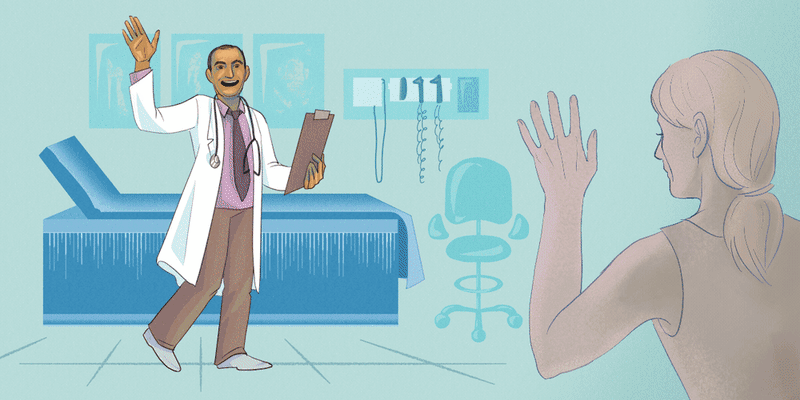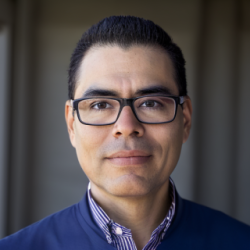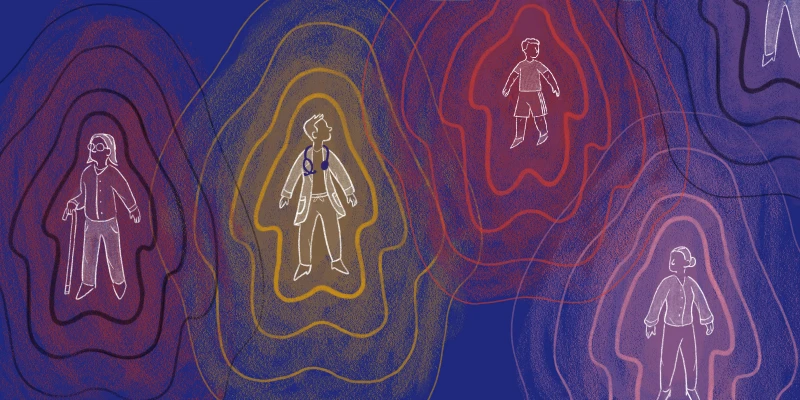The phone rang, and a familiar voice said five unforgettable words:
"Dr. Swarup, I'm not dead yet."
It was the husband of one of my longtime patients. Months earlier, he had been hospitalized at a tertiary medical center for a severe infection. During that stay, imaging revealed changes that could have been cancer. The biopsy did not confirm it, but based on how the scans looked, cancer became the working assumption.
Somewhere between "possible" and "probable," the message shifted in his mind — or in the chain of communication — to "certain."
He was told to prepare for less than a year to live. Hospice care was arranged. And for three months, he waited: for pain, for decline, for the end he had been led to believe was inevitable.
But the expected decline never came. Something didn't fit. He still had energy. He could enjoy meals. His weight held steady. He didn't feel like someone in the final chapter of life. His wife — my patient — noticed and urged him to call me.
That call triggered a full review. I combed through hundreds of pages of medical records, ordered new scans, and compared them side-by-side with the originals. The result was startling: There was no sign of cancer. Those suspicious spots on the earlier images were almost certainly part of the infection, not a malignancy.
The problem isn't just misdiagnosis. It's the missing follow-up. Medicine is complex, and it's not uncommon for early findings to mimic something more serious. The real danger here wasn't the initial suspicion — it was what happened next: nothing.
Once the life-limiting diagnosis was declared, there was no structured follow-up, no scheduled reevaluation, no "checkpoint" to compare expectation with reality. Prognosis was treated like prophecy. But prognoses are hypotheses, and hypotheses need testing. A prognosis is not a guarantee. It's a prediction based on the best available evidence at the time. But like any prediction, it must be checked against what actually happens. Without those feedback loops, patients can spend weeks or months living under the weight of an outcome that may never arrive, sometimes even making irreversible life decisions based on incomplete or outdated information.
What Physicians Must Do Differently
If you are the one making or inheriting a serious prognosis:
Build checkpoints into the plan. Prognosis should always come with a reevaluation date. Put it in writing.
Clarify ownership. Make explicit who is responsible for reassessment if the clinical picture changes.
Invite second looks. Normalize the idea that diagnostic and prognostic calls are hypotheses that deserve testing, not pronouncements to be obeyed.
Communicate with humility. Share uncertainty openly with patients and families. It fosters trust and creates space for reexamination when needed.
These steps aren't adversarial to colleagues or undermining to patient confidence. They are essential safeguards to ensure that care reflects reality rather than assumption.
This gap between diagnosis and follow-up isn't unique to cancer care. It can occur in cardiology, neurology, infectious disease ... any specialty where uncertainty exists. The fix isn't complicated: build in "recheck" points, and keep communication lines open across disciplines.
Sometimes the most life-changing conversation doesn't start in the clinic, but on the phone. And sometimes, it begins with a patient reminding us of what we should already know: "I'm not dead yet."
Sriman Swarup, MD, MBA, is a board-certified hematologist and medical oncologist practicing in Arizona. He cares for over 3,000 patients annually and is also the founder of OncoNexus, a health technology initiative focused on improving cancer care workflows.
Previously published on Substack.
Illustration by Diana Connolly







